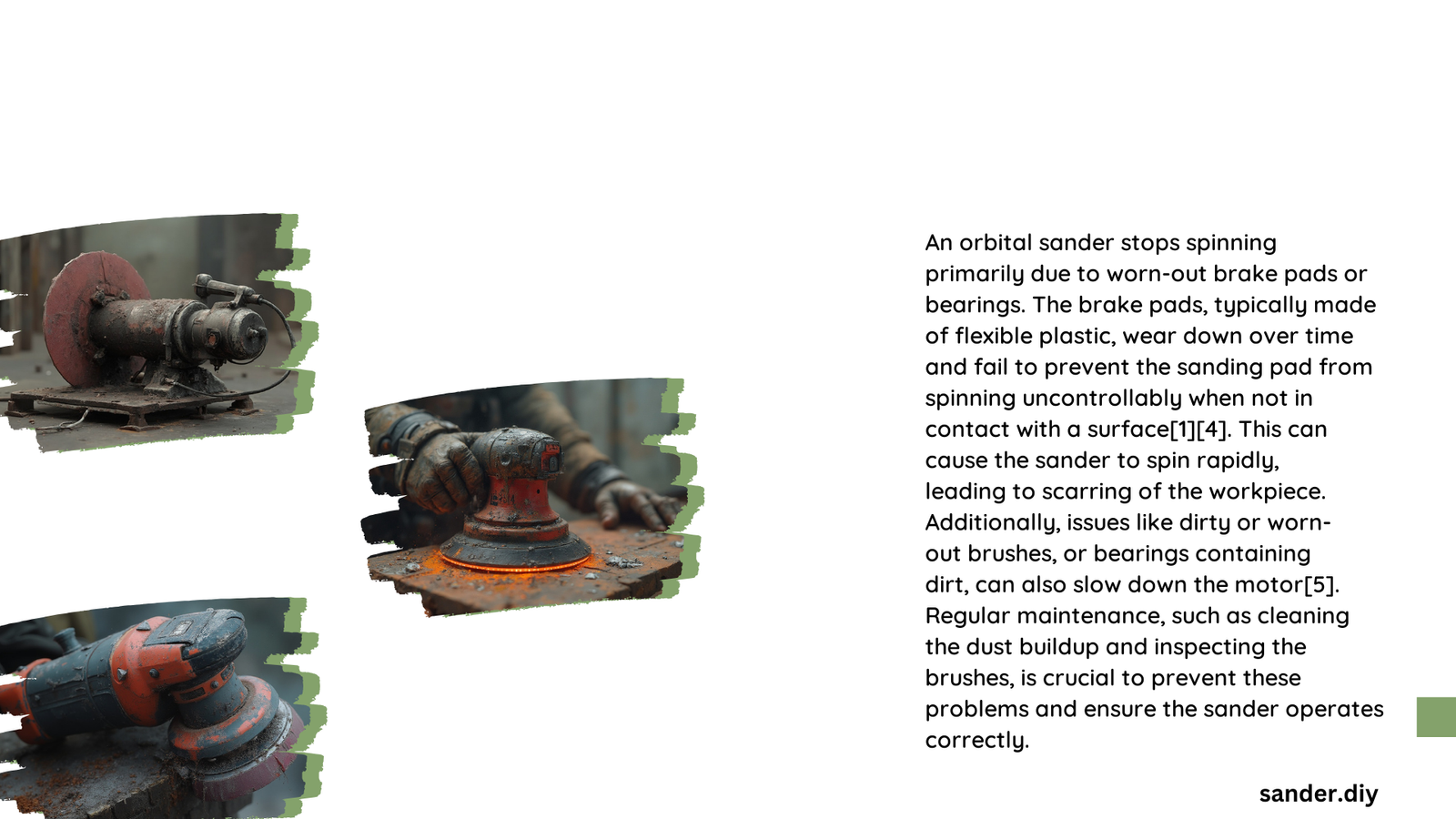Orbital sanders are essential woodworking tools that can unexpectedly halt mid-operation, frustrating craftsmen and DIY enthusiasts. Understanding the complex mechanisms behind motor failure is crucial for diagnosing and resolving spinning interruptions. From mechanical wear to electrical complications, multiple factors can cause your orbital sander to stop spinning, requiring systematic investigation and targeted solutions.
What Causes Mechanical Failures in Orbital Sanders?
Are Worn-Out Brushes Stopping Your Sander?
Carbon brushes are critical components in orbital sanders that transfer electrical current to the motor. When these brushes deteriorate, they can cause intermittent or complete motor stoppage. Key indicators include:
- Visible sparking during operation
- Inconsistent motor speed
- Reduced sanding performance
Brush Wear Assessment Checklist:
| Condition | Action Required |
|---|---|
| Significant brush wear | Replace brushes |
| Minor wear | Clean and inspect |
| Excessive sparking | Immediate replacement |
Can Bearing Damage Interrupt Sander Performance?
Bearings play a crucial role in maintaining smooth rotational movement. When bearings wear out or seize, they can completely halt the sander’s spinning mechanism. Symptoms include:
- Grinding noises during operation
- Stiff or jerky movement
- Complete motor lockup
What Electrical Problems Prevent Orbital Sander Rotation?

How Do Power Cord Issues Impact Sander Functionality?
Electrical connectivity problems can immediately stop your orbital sander from spinning. Critical areas to examine include:
- Power cord integrity
- Plug connection stability
- Internal wiring condition
Diagnostic Steps for Power Cord Problems:
– Inspect cord for visible damage
– Test electrical continuity
– Verify secure plug connection
– Check for frayed or exposed wiring
Will Switch Malfunction Stop Your Sander?
Switches are vulnerable to dust accumulation and mechanical stress. Common switch-related issues include:
- Dust-covered electrical contacts
- Mechanical switch failure
- Intermittent electrical connection
How Can Dust Accumulation Affect Sander Performance?
Dust represents a significant threat to orbital sander functionality. Excessive buildup can:
- Block ventilation systems
- Interfere with moving parts
- Cause overheating
Dust Management Strategies:
– Regular compressed air cleaning
– Use dust collection attachments
– Perform periodic internal maintenance
What Maintenance Practices Prevent Sander Stoppage?
Proactive maintenance is key to preventing unexpected orbital sander failures:
- Clean brushes regularly
- Lubricate bearings
- Inspect electrical components
- Store in dust-free environment
- Use appropriate protective gear
Conclusion: Systematic Approach to Sander Reliability
Understanding why orbital sanders stop spinning requires a comprehensive approach. By recognizing mechanical, electrical, and environmental factors, woodworkers can diagnose and resolve issues efficiently.
Pro Tip: Always consult manufacturer guidelines and consider professional repair for complex motor issues.
